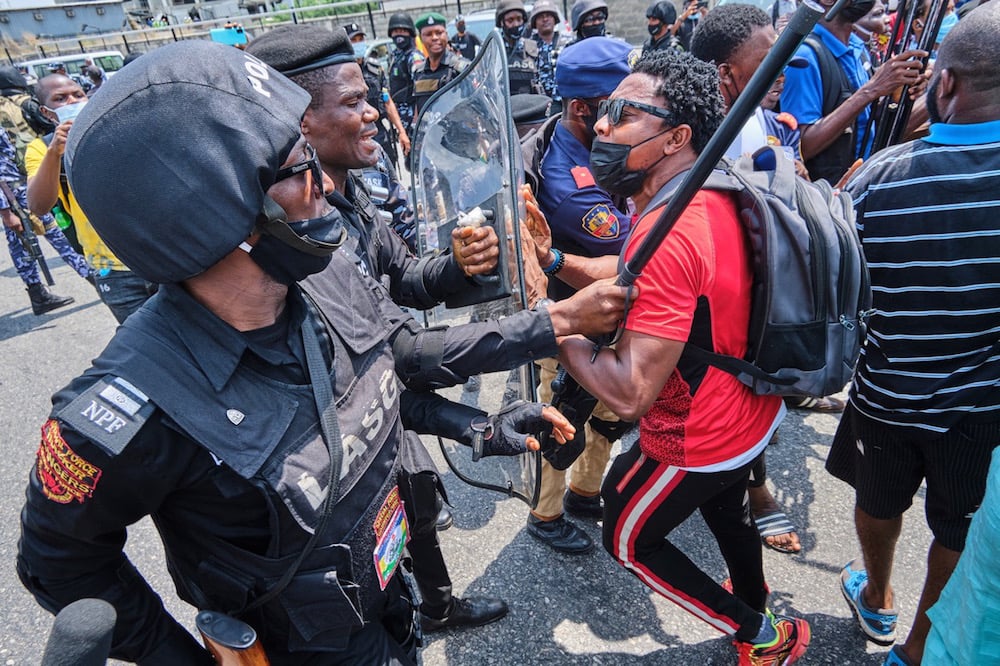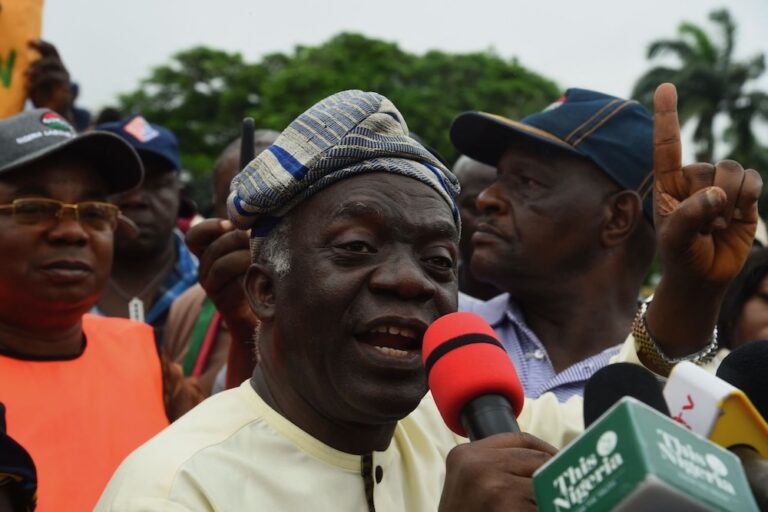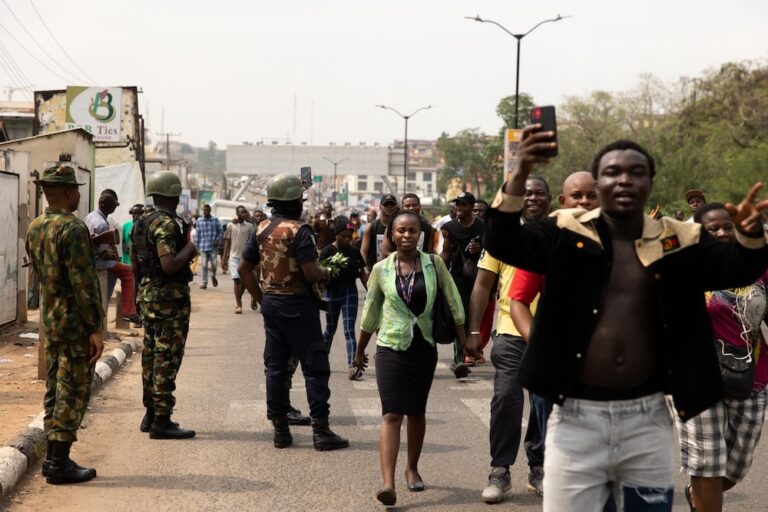Journalist Eti-Inyene Godwin Akpan, who witnessed the police shooting of #EndSARS protestors at Lekki Toll Gate, in Lagos, Nigeria, receives threats for publishing the photographs and flees to Ghana.
This statement was originally published on cpj.org on 10 November 2021.
By Jonathan Rozen/CPJ Senior Africa Researcher
The photos showed blood-soaked concrete, a gashed open thigh, and an injured protester grimacing in pain on the ground. Taken by photojournalist Eti-Inyene Godwin Akpan on October 20, 2020, the images tell the story of Nigerian forces’ mass shooting of anti-police brutality protesters at Lagos’ Lekki Toll Gate, an incident the government continues to deny.One year after Akpan published the photographs on social media, he planned to display them in Lagos at a museum exhibit marking the anniversary of the protests against police brutality that swept Nigeria late last year. But he postponed the show indefinitely after receiving two calls summoning him, without explanation, to the local offices of Nigeria’s Department of State Services (DSS), a federal security agency.
“I now sleep with one eye closed, trying to watch my back every second,” Akpan told CPJ in a phone call. “They know I know some things and I have some images…”
The calls came minutes after Akpan gave a live interview on local TV about his work documenting the 2020 protests. Akpan said that he asked the callers for a formal, emailed summons. He feared that without it, the DSS might mistreat him or hold him for a prolonged period without access to a lawyer or his family, the kind of behavior that CPJ has documented in the past. The calls echoed intimidation tactics he said he faced a year earlier following his posting on social media about the toll gate shooting – tactics that led him to temporarily flee the country.
Reached by CPJ via messaging app, DSS spokesperson Peter Afunanya denied that his agency called Akpan in early October 2021. He also dismissed concerns over the DSS’ history of detaining journalists.
“Right in front of my eyes, I saw dead bodies,” reads the caption on Akpan’s Instagram post from the October 2020 shooting that killed protesters, according to local and international media and rights groups. It was the deadliest incident in last year’s protests, known as the End SARS movement – a reference to the protesters’ call to dismantle Nigeria’s Special Anti-Robbery Squad unit.
Journalists covering the protest movement were beaten, harassed, and fined by law enforcement. One reporter, Onifade Emmanuel Pelumi, was found dead at a mortuary on October 30, 2020; he was last seen alive in police custody after he covered unrest around the protests in Lagos.
Images of the Lekki Toll Gate killings are particularly sensitive, Akpan told CPJ, because they contradict the government’s account. In a press conference, Nigerian Minister of Information and Culture Lai Mohammed marked October 20 this year by calling it “the first anniversary of the phantom massacre,” which took place “without blood or bodies.” Last year the Nigerian army admitted it used live rounds at the toll gate, but said its forces only shot into the air.
After Akpan first published the pictures, he told CPJ that anonymous callers pressured him to take down the Instagram post and replace it with one saying the images were fake. He said his bank account was frozen and that DSS agents arrived at his office looking for him, which DSS spokesperson Afunanya denied.



